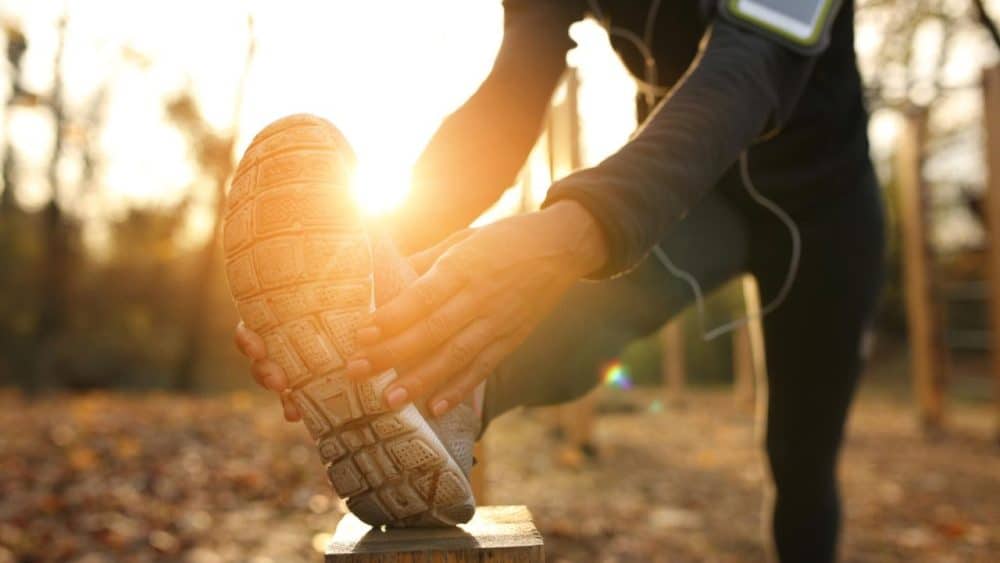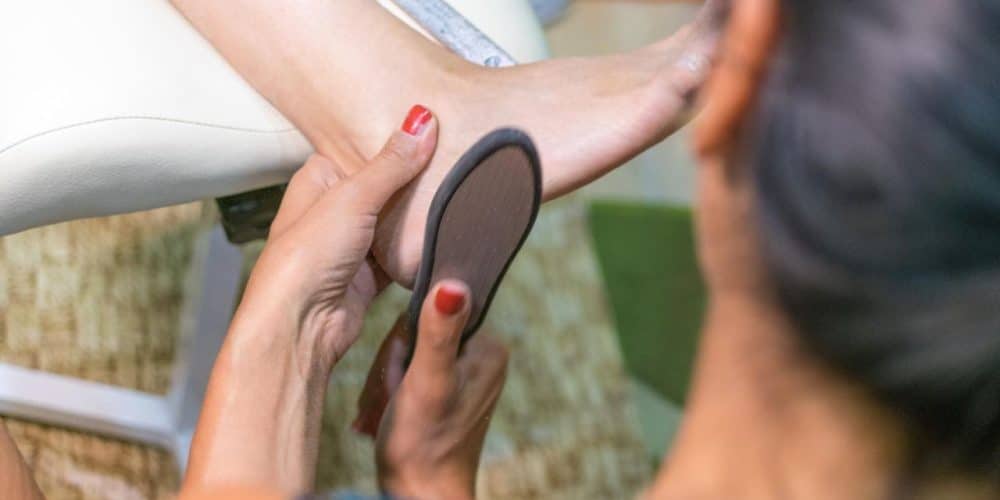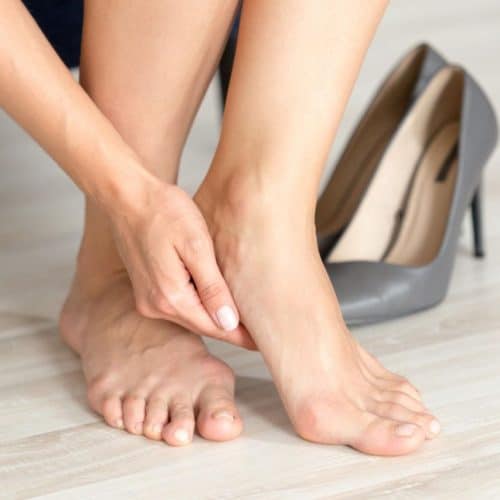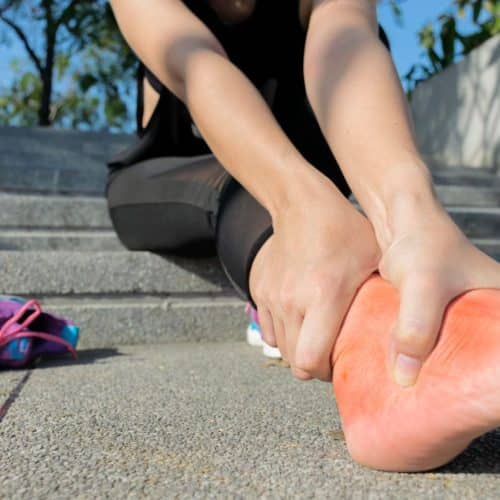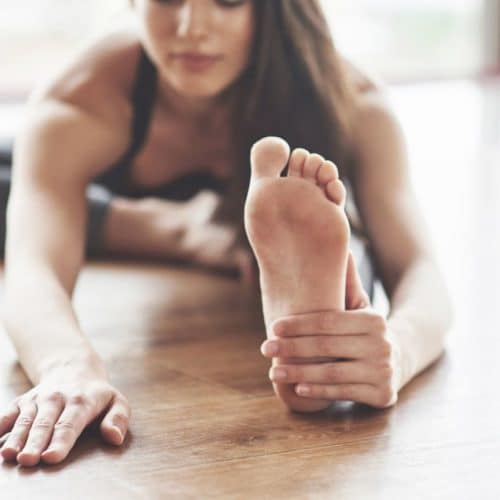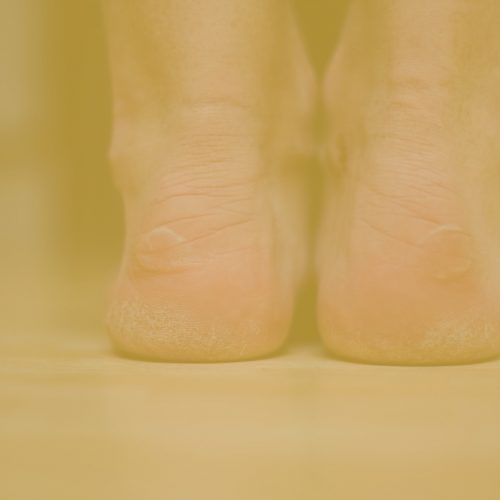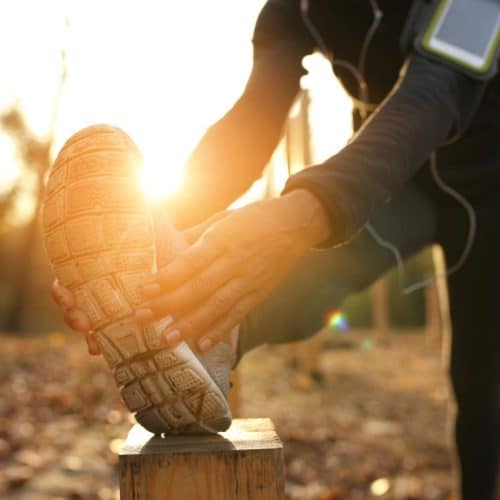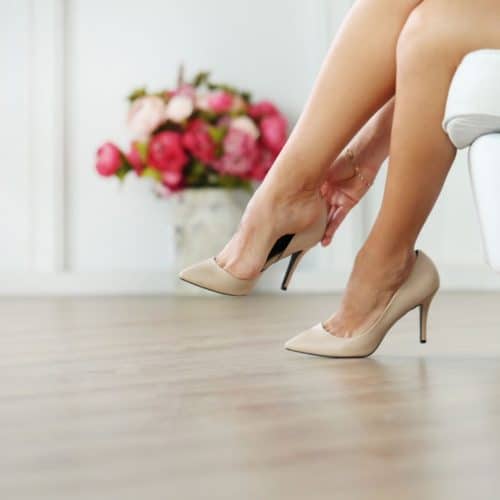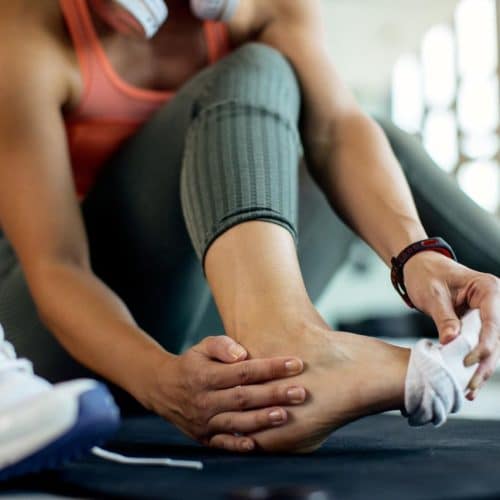Do your feet often feel on fire after a long day of walking? Are blisters on your arches causing discomfort that just won’t quit? If you’re nodding in agreement, you’re in the right place. In this article, we’re diving into arch blisters – a common woe for many, whether they use orthotics or not.
Understanding Arch Blisters
Arch blisters, sometimes called friction blisters, are common foot ailments that can cause discomfort and inconvenience. To fully comprehend the nature of arch blisters, it’s important to delve into their causes, symptoms, and factors contributing to their formation.
1. What are Arch Blisters?
Arch blisters are small, fluid-filled sacs that develop on the skin’s surface, most commonly on the arches of the feet. These blisters result from friction when rubbing or pressing a specific skin area is repeated. The friction causes the outer layer of skin to separate from the underlying layers, forming a pocket of clear fluid within the separated layers.
2. The Role of Friction
In this context, friction is the force that opposes the relative motion or tendency of motion between two surfaces in contact. In the case of arch blisters, friction occurs between the foot’s skin and the shoe’s surface. When the foot moves within the shoe, especially during activities like walking, running, or sports, the continuous rubbing can create frictional forces that damage the skin’s integrity.
3. Symptoms and Sensations
Arch blisters are known for causing discomfort and pain. The presence of the blister itself can be felt as a tender, raised area on the skin’s surface. The fluid within the blister is the body’s protective response to the friction, cushioning the damaged area. However, this fluid accumulation can also cause pressure, leading to additional discomfort. The affected area might appear reddened and swollen due to the inflammation caused by the body’s natural healing response.
4. Contributing Factors
Several factors contribute to the development of arch blisters. Ill-fitting shoes are a primary culprit, as they can create pressure points where the shoe and foot come into contact. Shoes that are too tight or too loose can cause excessive rubbing and friction. Additionally, shoes made from stiff or rigid materials can exacerbate the problem by not allowing the foot’s natural movements.
Moisture is another significant factor. When the foot sweats excessively or gets wet, the skin becomes softer and more vulnerable to friction. This is why activities that involve prolonged exposure to moisture, such as walking in the rain or sweaty workouts, can increase the likelihood of developing blisters.
5. The Healing Process
As the body’s natural healing mechanisms kick in, the separated layers of skin within the blister begin to reattach. The fluid-filled blister provides a protective barrier against further friction and infection. Over time, the fluid is gradually reabsorbed, and the skin underneath the blister regenerates. This healing process usually takes several days, during which the blister might gradually shrink in size.
Causes of Arch Blisters
Arch blisters result from a delicate balance disrupted – the equilibrium between the forces acting on your feet and the protective mechanisms your body employs. To comprehend the causes of arch blisters, exploring the intricate interplay of factors that can lead to their formation is essential.
1. Friction: The Primary Culprit
At the core of arch blister formation is friction. Friction is the resistance encountered when two surfaces come into contact and attempt to move against each other. When it comes to your feet, the rubbing between your skin and the inner surface of your footwear generates frictional forces that can be damaging over time.
2. Ill-Fitting Footwear
One of the most prevalent causes of arch blisters is wearing ill-fitting shoes. Footwear that’s either too tight or too loose can create pressure points, where the shoe and foot repeatedly rub against each other. The friction generated by this constant movement can lead to the separation of the skin layers, forming blisters.
3. Materials Matter
The type of material your shoes are made from plays a significant role in blister development. Shoes constructed from rigid or coarse materials can intensify friction, as they don’t allow for the necessary flexibility of movement. Soft, pliable materials tend to reduce friction and are less likely to cause blistering.
4. Moisture and Heat
Moisture and heat can exacerbate the friction-related issues that lead to arch blisters. Excessive sweating or damp environments can soften the skin, making it more susceptible to friction and damage. Moist skin is also more likely to adhere to the inner surface of the shoe, increasing the likelihood of blisters forming.
5. Inadequate Cushioning
Insufficient cushioning within shoes can make your feet more susceptible to pressure and friction. Shoes without adequate padding fail to provide a protective barrier between your foot and the shoe’s interior. This lack of cushioning allows for direct contact between the skin and the shoe, increasing the potential for blister development.
6. Activities and Movement
Certain activities, such as running, walking long distances, or engaging in sports, can intensify the forces acting on your feet. The repetitive and increased foot movement during these activities amplifies the friction between your skin and footwear. This heightened friction elevates the risk of blisters forming, especially if preventive measures aren’t taken.
7. Preexisting Foot Conditions
Individuals with preexisting foot conditions, such as high arches or flat feet, might be more susceptible to arch blisters. These conditions can affect how weight is distributed across the foot, potentially creating increased pressure and friction areas. Individuals with such conditions must pay extra attention to their footwear and consider orthotic inserts.
Preventing Arch Blisters
Preventing arch blisters requires a combination of thoughtful footwear choices, proper foot care, and proactive measures to minimise friction. By adopting these strategies, you can significantly reduce the risk of blister formation and enjoy greater comfort during your daily activities.
1. Choose the Right Footwear
- Opt for shoes that fit well and provide ample space for your toes to move.
- Look for footwear with adequate cushioning to absorb impact and reduce friction.
- Prioritise shoes made from soft, flexible materials that allow for natural foot movement.
2. Wear Moisture-Wicking Socks
- Choose socks made from moisture-wicking materials that keep your feet dry.
- Moisture-wicking socks can help minimise friction and reduce the likelihood of blisters.
3. Maintain Proper Foot Hygiene
- Keep your feet clean and dry, especially after engaging in physical activities.
- Dry your feet thoroughly before putting on socks and shoes to prevent moisture-related friction.
4. Use Lubricants or Anti-Friction Products
- Apply lubricants, such as petroleum jelly or specialised blister prevention sticks, to areas prone to friction.
- These products create a protective barrier between your skin and footwear, reducing friction.
5. Break in New Shoes
- Gradually introduce new shoes into your routine to allow your feet to adjust to them.
- Wear new shoes for short periods initially, gradually increasing the duration to prevent excessive rubbing.
6. Consider Orthotics
- Custom orthotic inserts can help distribute pressure more evenly across your feet.
- Orthotics can reduce friction and alleviate the strain on specific areas, reducing the risk of blisters.
7. Keep Your Feet Dry
- Use moisture-absorbing foot powders or antiperspirants to keep your feet dry.
- Dry feet are less prone to friction-related issues, including blister formation.
8. Lace Your Shoes Properly
- Adjust the laces of your shoes to ensure a snug, secure fit without excessive tightness.
- Proper lacing can prevent your feet from sliding within the shoe, minimising friction.
9. Gradually Increase Activity Levels
- If you’re engaging in new physical activities, gradually increase their intensity and duration.
- Sudden, excessive movements can lead to increased friction and blisters.
10. Choose Appropriate Sock Thickness
- Opt for socks with appropriate thickness for the activity you’re engaging in.
- Thick socks can provide extra cushioning, reducing the impact of friction.
11. Monitor and Address Hot Spots
- Pay attention to areas where you often experience discomfort or irritation.
- Apply padding or bandages to these “hot spots” to prevent further friction.
By incorporating these preventive measures into your daily routine, you can effectively minimise the risk of arch blisters. Remember that individual needs may vary, so it’s important to tailor these strategies to your circumstances and activities. Your feet will thank you for the extra care and attention, allowing you to stay comfortable and blister-free.
Treating Arch Blisters
When arch blisters do occur, it’s essential to provide prompt care to alleviate discomfort and promote healing. While prevention is the best approach, effective treatment can expedite recovery and prevent complications.
Once a blister forms, resisting the urge to pop it is crucial. Popping a blister increases the risk of infection and delays the healing process. Instead, follow these steps:
Clean the area around the blister with mild soap and water. Gently pat the area dry using a clean, soft towel.
Apply an antibacterial ointment or cream to the blister and the surrounding skin. This helps prevent infection and aids in the healing process.
Cover the blister with a sterile adhesive bandage or blister pad. The covering provides a protective barrier, preventing further friction and reducing the risk of infection.
Avoid wearing tight or ill-fitting footwear that might rub against the blister. Opt for open-toed shoes or sandals if possible to prevent additional pressure.
It is best to get podiatry assistance if the blister is big, painful or if it displays indications of infection (such as redness, warmth, or discharge). In these cases, the blister might be infected. A qualified health practitioner may evaluate the blister, administer the right therapy, and provide recommendations regarding any additional procedures that need to be taken to guarantee good healing.
Keep in mind that the recovery process will take some time. As time passes, the body will gradually reabsorb the fluid that is contained within the blister, and the layers of skin that were split will start to begin to rejoin themselves. It is imperative that during this time period, you refrain from doing anything that might make the blister worse or slow down the healing process.
In cases where arch blisters become a recurring issue or are particularly persistent, considering orthotic inserts can be a valuable long-term solution. Orthotics can redistribute pressure and reduce friction, addressing the underlying causes of blister formation.
Orthotics: An Overview
Orthotics are specialised shoe inserts that provide support, alignment, and enhanced foot comfort. These inserts can be particularly beneficial for individuals dealing with various foot conditions or seeking to prevent issues like arch blisters. Let’s delve into the details of orthotics and how they can offer relief and support.
Orthotics come in two main categories: custom-made orthotics and over-the-counter inserts. Each type has advantages and considerations, catering to different needs and preferences.
1. Custom-Made Orthotics
Custom orthotics are tailored to the unique shape and contours of your feet. These inserts are typically prescribed and crafted by podiatrists or foot specialists. The process involves creating a precise mould or scan of your feet, ensuring that the orthotics provide personalised support.
1. Benefits of Custom Orthotics
- Personalised Support: Custom orthotics are designed to address specific foot concerns, providing precise support where needed.
- Targeted Relief: They can target areas prone to friction and pressure, helping to prevent issues like arch blisters.
- Alignment Correction: Custom orthotics can improve the alignment of your feet, potentially alleviating discomfort and improving overall gait.
2. Considerations
- Cost: Custom orthotics tend to be more expensive than over-the-counter options due to the personalised nature of their design.
- Time: Crafting custom orthotics takes time, and you might need to wait for them to be manufactured after your measurements are taken.
2. Over-the-Counter Inserts
Over-the-counter orthotic inserts are readily available in stores and online. While they’re not custom-made for your feet, they can still offer benefits and relief for general foot discomfort.
1. Benefits of Over-the-Counter Inserts
- Affordability: Over-the-counter inserts are generally more budget-friendly than custom orthotics.
- Convenience: You can purchase over-the-counter inserts without needing professional measurements or fittings.
- Variety: These inserts come in various shapes and styles, allowing you to experiment and find the best shoe fit.
2. Considerations
- Limited Personalisation: Over-the-counter inserts are not specifically designed for your foot’s unique needs, so their effectiveness may vary.
- Addressing Specific Concerns: While they can provide general support, they might not offer the targeted relief required for certain foot conditions.
Both custom-made orthotics and over-the-counter inserts can play a role in preventing arch blisters. They provide additional cushioning, distribute pressure more evenly, and reduce friction, all contributing to enhanced foot comfort. When choosing between the two options, consider your foot’s specific requirements, your budget, and the guidance of a healthcare practitioner.
Getting the Right Fit
Ensuring that your orthotics fit correctly maximises their benefits and prevents issues like arch blisters. A proper fit guarantees that the orthotics provide the intended support and comfort, promoting overall foot health.
When seeking the right fit for your orthotics, consider the following guidelines:
- Begin by consulting a podiatrist or foot specialist. These professionals can assess your foot structure, gait, and any specific concerns you might have. Their expertise will guide you in selecting orthotics catering to your needs.
- Choose orthotics that match the shape of your shoe. Orthotics come in various styles and sizes, so selecting ones that fit comfortably within your shoes is crucial. Ill-fitting orthotics can create additional friction and discomfort, potentially leading to blisters.
- Pay attention to your comfort level. When trying orthotics, ensure they don’t cause discomfort or pressure points. While some initial adjustment might be necessary, orthotics should ultimately enhance foot comfort, not hinder it.
- Follow the provided instructions. Orthotics often come with guidelines for proper usage and care. Adhering to these instructions can help you experience the full benefits of your orthotics and prevent issues like premature wear.
- Consider the activity level. If you’re using orthotics for specific activities, such as sports or hiking, ensure they suit those activities. Some orthotics are designed with certain activities in mind and offer tailored support accordingly.
- Regularly assess your orthotics’ condition. Over time, orthotics might show signs of wear or lose their effectiveness. If you notice any changes in comfort or support, replace them to ensure continued benefits.
Getting the right fit for your orthotics might require some trial and error. It’s essential to remain patient and proactive in finding the best combination of orthotics and shoes that cater to your unique foot structure and needs. By investing time and effort into achieving the proper fit, you can enjoy the advantages of reduced friction, enhanced comfort, and minimised risk of arch blisters.
Wearing Orthotics Correctly
Properly wearing orthotics is key to reaping their full benefits and effectively preventing arch blisters. While orthotics can provide valuable support, it’s important to ensure that you’re using them correctly to experience optimal results.
Here are some guidelines to follow when wearing orthotics:
- Insert them properly: When placing orthotics into your shoes, ensure they are positioned correctly and fully inserted. Proper placement guarantees that the orthotics provide the intended support and cushioning.
- Wear them consistently: For orthotics to be effective, they must be worn consistently. Make them a part of your daily routine, especially during activities that typically cause friction or discomfort.
- Pair them with appropriate footwear: Choose shoes with enough space to accommodate the orthotics without feeling cramped. Make sure the shoes provide a snug fit without causing excessive pressure.
- Adjust lacing and straps: If your shoes have laces or straps, adjust them to ensure a secure fit. This prevents your feet from sliding within the shoe, leading to friction and blisters.
- Listen to your body: While orthotics can take some time to get used to, they should ultimately enhance your comfort. Consult a healthcare practitioner if you experience persistent discomfort, pain, or blisters while wearing orthotics.
- Combine them with preventive measures: While orthotics can significantly reduce friction, it’s still a good idea to take preventive measures like wearing moisture-wicking socks and choosing well-fitting footwear.
- Replace them as needed: Orthotics have a lifespan, and their effectiveness might diminish. Regularly assess the condition of your orthotics, and if you notice signs of wear or reduced support, consider replacing them.
Remember that orthotics are designed to provide additional support and cushioning for your feet. They can alleviate discomfort, promote proper alignment, and help prevent issues like arch blisters when used correctly. By following these guidelines and incorporating orthotics into your daily routine, you can enjoy improved foot health and increased comfort during various activities.
Alternative Treatments
In addition to traditional methods, alternative treatments and remedies can be explored to address arch blisters. These alternatives focus on natural solutions and, in some cases, medical interventions that can aid in healing and prevention.
1. Natural Remedies
Some individuals prefer natural remedies for managing arch blisters. These remedies aim to reduce friction and promote healing using ingredients readily available at home. Aloe vera gel to the affected area can help soothe irritation and provide a protective barrier. Similarly, moleskin padding can be applied to areas prone to friction, creating a cushioning barrier that reduces pressure on the blister.
2. Medical Interventions
For severe or persistent arch blisters, medical interventions may be considered. Laser therapy, for instance, can accelerate the healing process by promoting tissue repair and reducing inflammation.
However, it’s important to note that medical interventions should be discussed with a healthcare practitioner. They can assess the severity of your blister and recommend appropriate treatments based on your individual needs.
When considering alternative treatments, it’s advisable to consult a healthcare practitioner to ensure that the chosen method is safe and suitable for your specific situation. While these alternatives can complement traditional methods, they should be approached cautiously and with professional guidance.
Conclusion
In this comprehensive guide, we’ve explored the ins and outs of managing arch blisters, both with and without orthotics. Dealing with blisters on the arches of your feet can be a real pain, but armed with the right knowledge, you can find effective solutions to keep you on your feet and moving comfortably.
Remember, prevention is key. Investing in proper footwear can greatly reduce the risk of arch blisters, whether you’re an athlete, a regular walker, or always on the go. Orthotics, specifically designed to support the arches of your feet, can play a significant role in this regard.
However, if blisters develop, treating them promptly is crucial. Follow the steps outlined for proper blister care, from cleaning the area to applying protective dressings. Remember that if you’re using orthotics, it is essential to ensure they fit correctly and don’t exacerbate the blister.
For those who prefer to go without orthotics, exploring different methods of cushioning and support, such as specialised insoles or gel pads, can make a noticeable difference. Additionally, giving your feet time to rest and heal is paramount.
Now, let’s turn the spotlight to you! We’d love to hear about your experiences. What’s your favourite choice of footwear when embarking on long walks or engaging in activities that put stress on your feet? Are you a staunch supporter of orthotics, or do you have ingenious ways of ensuring your arches stay blister-free without them?
Share your insights and tips with our community in the comments below. Let’s help each other stride comfortably and confidently on our journeys!
Content Summary
- Discover the secrets to staying blister-free and keeping your feet happy from the Land Down Under.
- In a nutshell, when it comes to battling arch blisters, orthotics can be a game-changer.
- Arch blisters, sometimes called friction blisters, are common foot ailments that can cause discomfort and inconvenience.
- To fully comprehend the nature of arch blisters, it’s important to delve into their causes, symptoms, and factors contributing to their formation.
- Arch blisters are small, fluid-filled sacs that develop on the skin’s surface, most commonly on the arches of the feet.
- Arch blisters are known for causing discomfort and pain.
- Several factors contribute to the development of arch blisters.
- Arch blisters result from a delicate balance disrupted – the equilibrium between the forces acting on your feet and the protective mechanisms your body employs.
- To comprehend the causes of arch blisters, exploring the intricate interplay of factors that can lead to their formation is essential.
- At the core of arch blister formation is friction.
- One of the most prevalent causes of arch blisters is wearing ill-fitting shoes.
- The type of material your shoes are made from plays a significant role in blister development.
- Moisture and heat can exacerbate the friction-related issues that lead to arch blisters.
- The repetitive and increased foot movement during these activities amplifies the friction between your skin and footwear.
- Individuals with preexisting foot conditions, such as high arches or flat feet, might be more susceptible to arch blisters.
- Choose socks made from moisture-wicking materials that keep your feet dry.
- Moisture-wicking socks can help minimise friction and reduce the likelihood of blisters.
- Keep your feet clean and dry, especially after engaging in physical activities.
- Dry your feet thoroughly before putting on socks and shoes to prevent moisture-related friction.
- Gradually introduce new shoes into your routine to allow your feet to adjust to them.
- Use moisture-absorbing foot powders or antiperspirants to keep your feet dry.
- Adjust the laces of your shoes to ensure a snug, secure fit without excessive tightness.
- If you’re engaging in new physical activities, gradually increase their intensity and duration.
- Opt for socks with appropriate thickness for the activity you’re engaging in.
- Clean the area around the blister with mild soap and water.
- Apply an antibacterial ointment or cream to the blister and the surrounding skin.
- This helps prevent infection and aids in the healing process.
- Cover the blister with a sterile adhesive bandage or blister pad.
- It is best to get medical assistance if the blister is big, painful or if it displays indications of infection (such as redness, warmth, or discharge).
- Keep in mind that the recovery process will take some time.
- In cases where arch blisters become a recurring issue or are particularly persistent, considering orthotic inserts can be a valuable long-term solution.
- Over-the-counter orthotic inserts are readily available in stores and online.
- While they’re not custom-made for your feet, they can still offer benefits and relief for general foot discomfort.
- Over-the-counter inserts are generally more budget-friendly than custom orthotics.
- You can purchase over-the-counter inserts without needing professional measurements or fittings.
- Both custom-made orthotics and over-the-counter inserts can play a role in preventing arch blisters.
- When choosing between the two options, consider your foot’s specific requirements, your budget, and the guidance of a healthcare practitioner.
- Ensuring that your orthotics fit correctly maximises their benefits and prevents issues like arch blisters.
- Orthotics often come with guidelines for proper usage and care.
- Regularly assess your orthotics’ condition.
- Getting the right fit for your orthotics might require some trial and error.
- Properly wearing orthotics is key to reaping their full benefits and effectively preventing arch blisters.
- When placing orthotics into your shoes, ensure they are positioned correctly and fully inserted.
- Choose shoes with enough space to accommodate the orthotics without feeling cramped.
- Regularly assess the condition of your orthotics, and if you notice signs of wear or reduced support, consider replacing them.
- Remember that orthotics are designed to provide additional support and cushioning for your feet.
- In addition to traditional methods, alternative treatments and remedies can be explored to address arch blisters.
- These alternatives focus on natural solutions and, in some cases, medical interventions that can aid in healing and prevention.
- Some individuals prefer natural remedies for managing arch blisters.
- For severe or persistent arch blisters, medical interventions may be considered.
- However, it’s important to note that medical interventions should be discussed with a healthcare practitioner.
- When considering alternative treatments, it’s advisable to consult a healthcare practitioner to ensure that the chosen method is safe and suitable for your specific situation.
- In this comprehensive guide, we’ve explored the ins and outs of managing arch blisters, both with and without orthotics.
- Dealing with blisters on the arches of your feet can be a real pain, but armed with the right knowledge, you can find effective solutions to keep you on your feet and moving comfortably.
- Investing in proper footwear can greatly reduce the risk of arch blisters, whether you’re an athlete, a regular walker, or always on the go.
- Orthotics, specifically designed to support the arches of your feet, can play a significant role in this regard.
- Follow the steps outlined for proper blister care, from cleaning the area to applying protective dressings.
- Additionally, giving your feet time to rest and heal is paramount.
FAQs about Arch Blisters
1. What exactly is an arch blister?
An arch blister is a fluid-filled sac that forms between the layers of your skin due to friction, typically caused by ill-fitting shoes.
2. How do ill-fitting shoes contribute to arch blisters?
Ill-fitting shoes can create excessive friction between your skin and the shoe, leading to the separation of skin layers and the formation of blisters.
3. Can I continue my daily activities with arch blisters?
While possible, arch blisters can cause discomfort and worsen if not properly managed. Taking preventive measures is advisable.
4. Are orthotics a permanent solution for arch blisters?
Orthotics can provide effective long-term relief for many individuals, especially with proper footwear and hygiene practices.
5. Can I prevent arch blisters while participating in sports?
Yes, proper footwear, moisture-wicking socks, and orthotic inserts can significantly reduce the risk of arch blisters during sports and physical activities.


